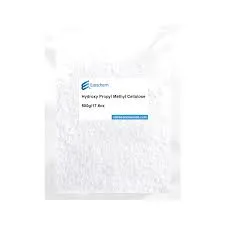
ნოე . 14, 2024 22:28 Back to list
hpmc properties
HPMC Properties A Versatile Polymer for Diverse Applications
Hydroxypropyl methylcellulose (HPMC) is a cellulose derivative that has gained widespread recognition due to its unique properties and versatile applications across various industries. This non-ionic, water-soluble polymer is synthesized through the etherification of natural cellulose, which comes from plant fibers. The modification process endows HPMC with valuable characteristics, making it an essential material in pharmaceuticals, food, cosmetics, and construction industries.
One of the standout properties of HPMC is its excellent thickening ability. It can significantly increase the viscosity of solutions, making it a preferred choice for many formulations. In the pharmaceutical industry, HPMC is commonly used as a binder in tablet formulations and as a film-forming agent for controlled-release drugs. Its viscosity can lead to improved drug stability and bioavailability, which are crucial for effective therapeutic outcomes.
HPMC Properties A Versatile Polymer for Diverse Applications
Another significant property of HPMC is its ability to form gels. At elevated temperatures, HPMC can undergo phase transition, leading to the formation of a gel-like structure. This characteristic is particularly useful in food applications, where HPMC serves as a gelling agent and stabilizer. It is often used in low-fat and gluten-free products to improve texture and mouthfeel, thereby enhancing consumer satisfaction.
hpmc properties

HPMC also possesses excellent film-forming properties. When applied to surfaces, it can create a cohesive, transparent, and flexible film. This makes HPMC an ideal choice for applications in the construction industry, where it is used in cement-based products to improve workability and adhesion. The film helps retain moisture in mortars and plasters, leading to enhanced performance and durability of construction materials.
Furthermore, HPMC is known for its thermal stability and resistance to various environmental conditions. It is not adversely affected by temperature fluctuations and can maintain its properties over a wide range of pH levels. This stability makes HPMC suitable for long-term use in diverse formulations without compromising their effectiveness.
The versatility of HPMC is further demonstrated by its role as a filler or bulking agent in many applications. In the food industry, it can be found in baked goods, sauces, and dressings, where it helps reduce calories while maintaining desirable textures. Its non-toxic and biodegradable nature also aligns with current trends towards eco-friendly materials, enhancing its appeal in various sectors.
In summary, HPMC is a multifunctional polymer with a unique combination of properties that make it indispensable in numerous applications. From pharmaceuticals and cosmetics to food and construction, its versatility and performance continue to generate interest and innovation in formulation chemistry. As industries seek sustainable and efficient materials, the importance of HPMC is likely to grow, securing its place as a staple ingredient in formulations worldwide.
-
tile-bonding-additives-for-stronger-bonds
NewsAug.22,2025
-
construction-grade-rdp-for-wholesale-needs
NewsAug.22,2025
-
trusted-wholesale-hec-partners
NewsAug.22,2025
-
hec-solutions-for-industrial-excellence
NewsAug.22,2025
-
construction-additives-need-hpmc-essentials
NewsAug.22,2025
-
hpmc-versatile-cellulose-ether-for-industries
NewsAug.22,2025







